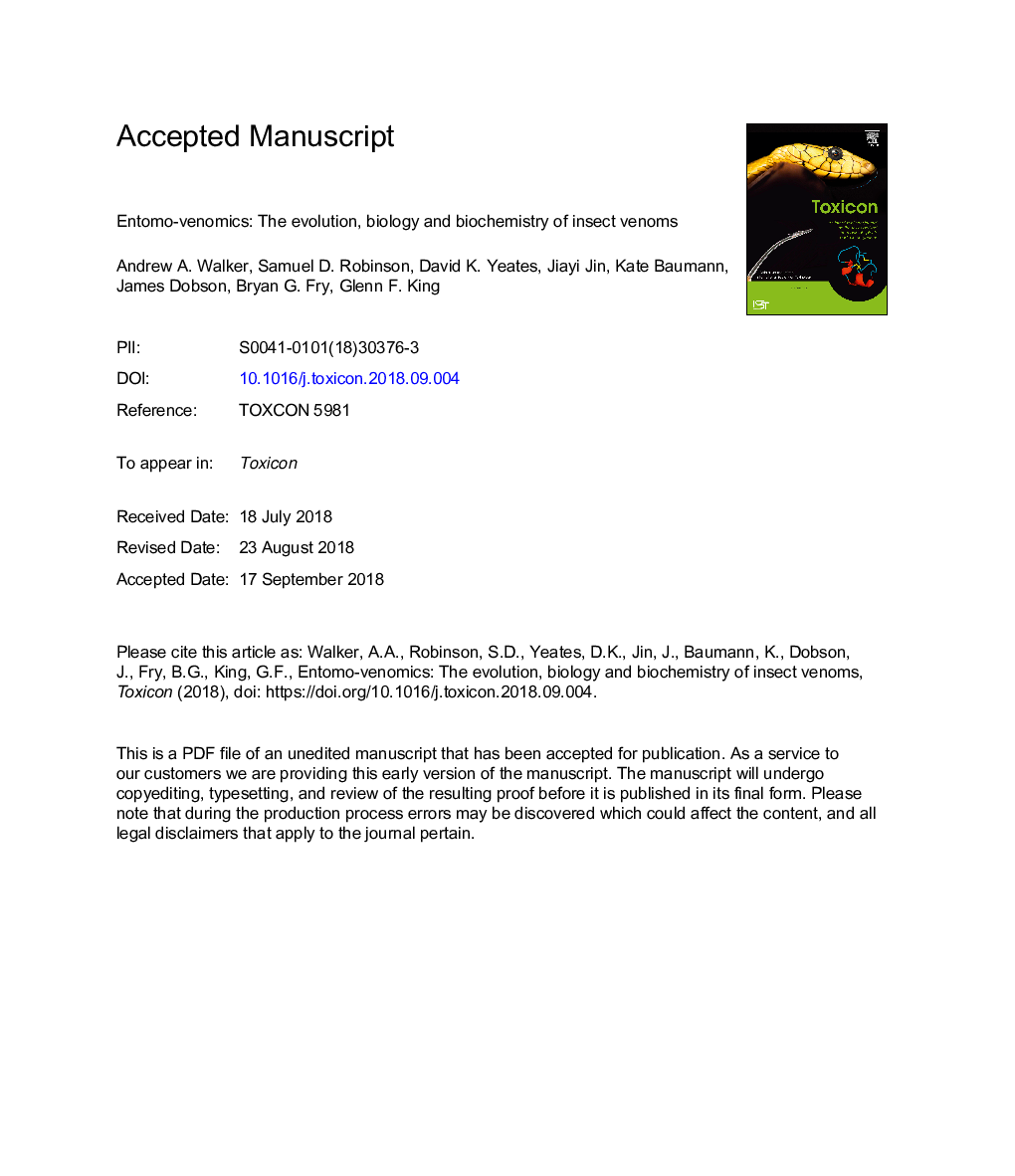| کد مقاله | کد نشریه | سال انتشار | مقاله انگلیسی | نسخه تمام متن |
|---|---|---|---|---|
| 11025979 | 1666457 | 2018 | 40 صفحه PDF | دانلود رایگان |
عنوان انگلیسی مقاله ISI
Entomo-venomics: The evolution, biology and biochemistry of insect venoms
دانلود مقاله + سفارش ترجمه
دانلود مقاله ISI انگلیسی
رایگان برای ایرانیان
کلمات کلیدی
موضوعات مرتبط
علوم زیستی و بیوفناوری
بیوشیمی، ژنتیک و زیست شناسی مولکولی
بیوشیمی، ژنتیک و زیست شناسی مولکولی (عمومی)
پیش نمایش صفحه اول مقاله

چکیده انگلیسی
The insects are a hyperdiverse class containing more species than all other animal groups combined-and many employ venom to capture prey, deter predators and micro-organisms, or facilitate parasitism or extra-oral digestion. However, with the exception of those made by Hymenoptera (wasps, ants and bees), little is known about insect venoms. Here, we review the current literature on insects that use venom for prey capture and predator deterrence, finding evidence for fourteen independent origins of venom usage among insects, mostly among the hyperdiverse holometabolan orders. Many lineages, including the True Bugs (Heteroptera), robber flies (Asilidae), and larvae of many Neuroptera, Coleoptera and Diptera, use mouthpart-associated venoms to paralyse and pre-digest prey during hunting. In contrast, some Hymenoptera and larval Lepidoptera, and one species of beetle, use non-mouthpart structures to inject venom in order to cause pain to deter potential predators. Several recently published insect venom proteomes indicate molecular convergence between insects and other venomous animal groups, with all insect venoms studied so far being potently bioactive cocktails containing both peptides and larger proteins, including novel peptide and protein families. This review summarises the current state of the field of entomo-venomics.
ناشر
Database: Elsevier - ScienceDirect (ساینس دایرکت)
Journal: Toxicon - Volume 154, November 2018, Pages 15-27
Journal: Toxicon - Volume 154, November 2018, Pages 15-27
نویسندگان
Andrew A. Walker, Samuel D. Robinson, David K. Yeates, Jiayi Jin, Kate Baumann, James Dobson, Bryan G. Fry, Glenn F. King,